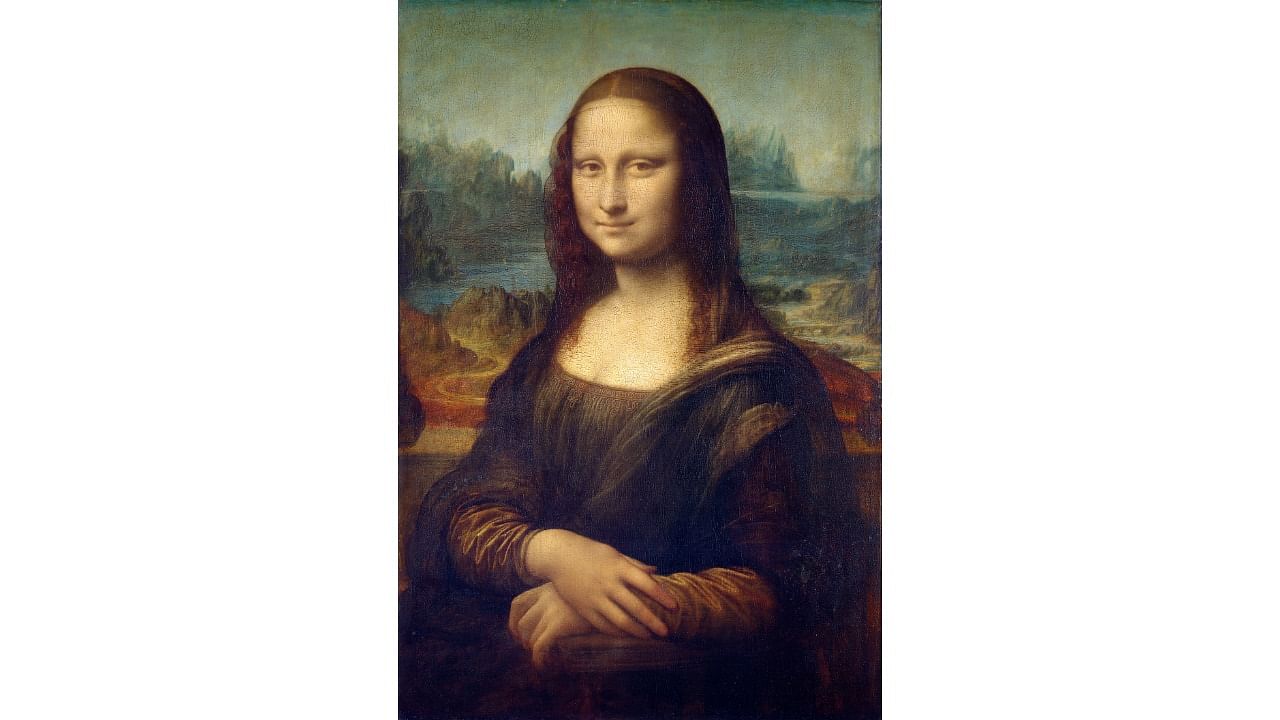
Mona Lisa
Credit: iStock Photo
While painting ‘The Last Supper’, Leonardo da Vinci reportedly modelled each apostle after a real person living in or near Milan. Having failed to find a suitable face for Judas, the Renaissance master supposedly searched the prisons of Milan, where he found a convicted criminal with the rugged features of a traitor willing to betray Jesus. Using his influence, da Vinci got the prisoner’s death sentence deferred. The criminal thus became the model, immortalising Judas in the painting. According to legend, the prisoner later revealed to da Vinci that he had previously posed as Jesus for the same painting, lamenting the irony: “Yesterday I was Jesus, and today I am Judas!”
While the veracity of the story is uncertain, there is no doubt that da Vinci was a perfectionist whose genius produced masterpieces like The Last Supper, Mona Lisa, and Vitruvian Man, cementing his legacy as one of history’s greatest artists. His talents, however, extended beyond art. He made groundbreaking contributions across diverse fields, including invention, engineering, anatomy, geology, optics, and more. Many of his innovations were much ahead of their time.
Unsurprisingly, da Vinci’s brilliance has captivated generations of researchers who have filled countless books and academic papers with his artistic and scientific achievements. His enduring mystique and genius continue to intrigue each new generation as more facets of the remarkable polymath emerge.
Da Vinci’s background is fascinating. Born out of wedlock to a wealthy notary and a peasant woman in the small town of Vinci, Italy, in 1452, he received no formal education. Due to his birth circumstances, he remained largely self-taught throughout his life. His artistic talents blossomed when, as a young teenager, he began studying under the esteemed Florentine artist Andrea del Verrocchio, first working as his apprentice before becoming a collaborator. His reputation as an artist grew in the following years as he created works displaying his exceptional skills. Around the time he was 30, he moved to Milan, a pivotal relocation. There, Ludovico Sforza, Duke of Milan, commissioned da Vinci in 1495 to paint the renowned Last Supper in the dining hall of the Convent of Santa Maria delle Grazie. The mural was completed in 1498. The rest is history.
Beyond paintings
Though da Vinci’s name is now synonymous with legendary paintings like The Last Supper and the Mona Lisa, historians have noted that he completed only about 20 paintings and left many unfinished. However, he made up for his limited output of paintings by prolifically filling numerous private notebooks with anatomical studies, fanciful inventions, and early designs for modern technologies like bicycles, helicopters, tanks, and airplanes. These notebooks revealed da Vinci’s brilliance as an indefatigable draftsman and visionary thinker beyond his iconic, but scarce, paintings.
Of the more than 13,000 pages of sketches that were later anthologised into codices, only less than a third survive. The pages of his notebooks are hailed as ‘the most remarkable record of human observation and imagination ever committed to paper’. A recent analysis of drawings in the notebooks shows that he had an astute understanding of many concepts, including Einstein’s ‘Equivalence Principle’, formulated in 1907, centuries before the physicist established it.
Da Vinci’s exceptional proficiency as an anatomist was fuelled by a profound interest in and fascination with the mysteries and inner mechanisms of the human body. He believed that the study of anatomy was essential to his artistic mastery. He secretly began dissecting cadavers in the early 1480s and continued these illegal explorations throughout his lifetime. His anatomical drawings were not only aesthetically pleasing but also incredibly precise. So intricate are the illustrations that they continue to stand as some of the most accurate representations of the human body to this day.
Fusion of art and science
Da Vinci’s art and science were deeply intertwined. His deep understanding of both realms fueled his prolific imagination, allowing him to seamlessly blend fantasy and reality in his work.
“He was the most relentlessly curious man in history,” wrote art historian Kenneth Clark in his famous book, Civilisation. “Everything da Vinci saw made him ask why and how... His curiosity was matched by an incredible mental energy.” Clark believed that it was a mistake to call da Vinci a typical Renaissance man. “He belonged to no epoch, he fits into no category, and the more you know about him, the more mysterious he becomes.”
Da Vinci was known to be a notorious procrastinator, labouring for years on individual projects, and leaving many unfinished. His impulse to explore new disciplines frequently led him to abandon artistic endeavours and pursue scientific or engineering studies instead.
Body and mind
Da Vinci was blessed with stunning good looks and impressive strength. He enjoyed the company of others, amassing an extensive network of friends across diverse disciplines. He walked freely on the streets of Florence and later Milan, impeccably dressed and surrounded by a lively entourage. He also took an interest in organising pageants, plays, and readings to entertain local crowds. Among his other defining traits, he was known to be homosexual, vegetarian, left-handed, and heretical. He believed that consuming meat was inhumane and needless. He would purchase caged birds only to release them.
His final known work had no artistic or scientific significance. It was a party he organised in honour of the King, in the summer of 1518. He died in the arms of the King in May 1519, aged 67.